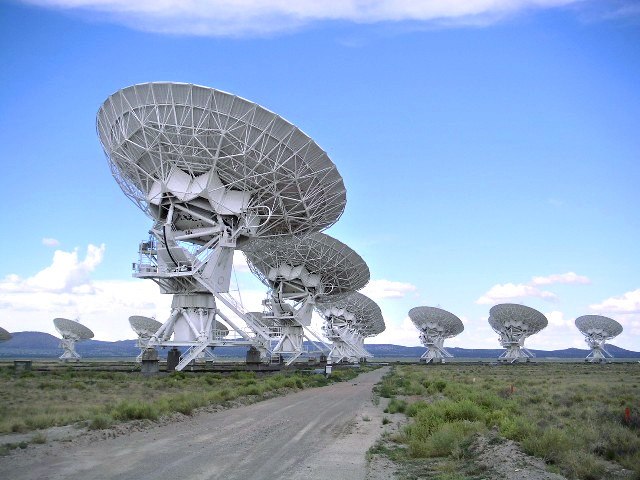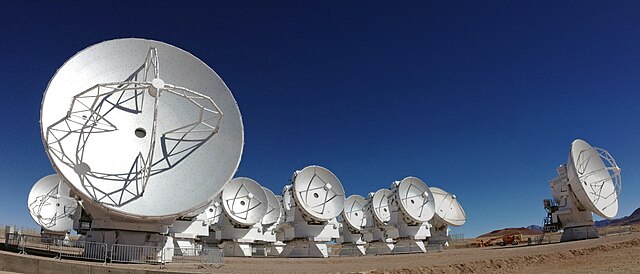Ruby Violet Payne-Scott was an Australian pioneer in radiophysics and radio astronomy, and was one of two Antipodean women pioneers in radio astronomy and radio physics at the end of the second world war, Ruby Payne-Scott the Australian and Elizabeth Alexander the New Zealander.
Payne-Scott as a student in the 1930s, possibly while she was studying at the University of Sydney (1929–1932)
With Alec Little (middle) and "Chris" Christiansen at the Potts Hill Reservoir Division of Radiophysics field station in about 1948
Participants in the International Union of Radio Science conference at the University of Sydney (1952). Payne-Scott is in the front row.
Radio astronomy is a subfield of astronomy that studies celestial objects at radio frequencies. The first detection of radio waves from an astronomical object was in 1933, when Karl Jansky at Bell Telephone Laboratories reported radiation coming from the Milky Way. Subsequent observations have identified a number of different sources of radio emission. These include stars and galaxies, as well as entirely new classes of objects, such as radio galaxies, quasars, pulsars, and masers. The discovery of the cosmic microwave background radiation, regarded as evidence for the Big Bang theory, was made through radio astronomy.
The Karl G. Jansky Very Large Array, a radio interferometer in New Mexico, United States
Chart on which Jocelyn Bell Burnell first recognised evidence of a pulsar, in 1967 (exhibited at Cambridge University Library)
The Atacama Large Millimeter Array (ALMA), many antennas linked together in a radio interferometer
An optical image of the galaxy M87 (HST), a radio image of same galaxy using Interferometry (Very Large Array – VLA), and an image of the center section (VLBA) using a Very Long Baseline Array (Global VLBI) consisting of antennas in the US, Germany, Italy, Finland, Sweden and Spain. The jet of particles is suspected to be powered by a black hole in the center of the galaxy.







